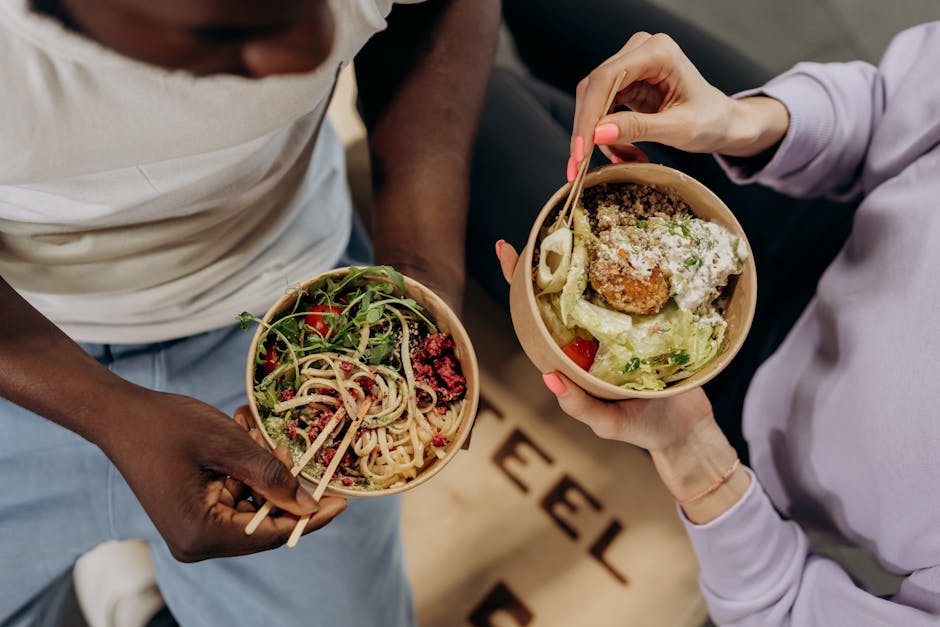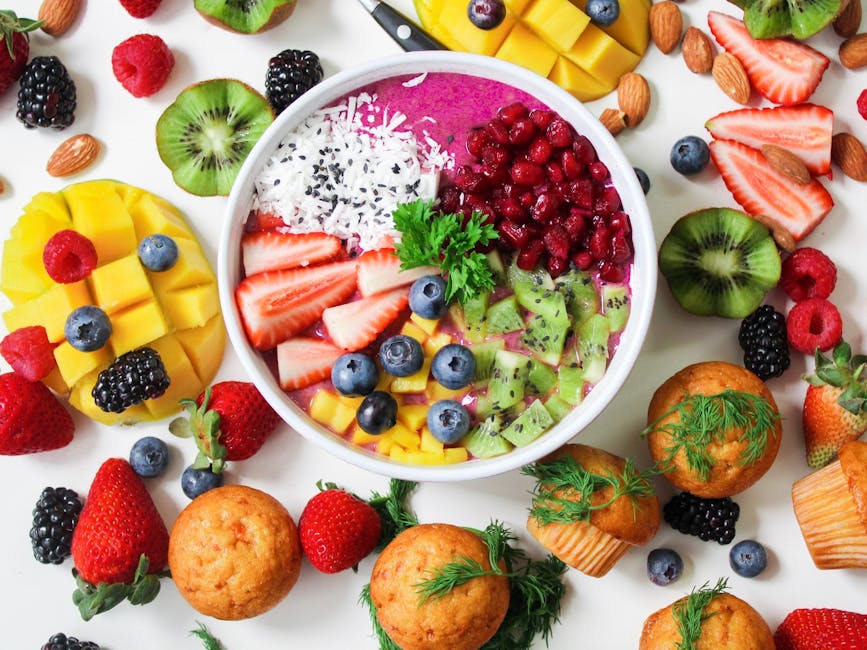Cooking with Colors: Enhance Taste and Satisfaction Today!
Have you ever noticed how a vibrant plate of food can instantly make your mouth water? The interplay between color and flavor isn't just a coincidence; it’s an intricate dance of psychology and culinary art that can transform your dining experience. In this article, we’ll delve into how the visual spectrum influences taste perception and meal satisfaction, giving you practical tips to create visually stunning dishes that don’t just look great but taste amazing, too. Get ready to elevate your cooking to a new level of creativity and enjoyment!
Understanding Color Psychology in Food

Color isn't just for decoration; it impacts our mood, emotions, and even our culinary experiences. Studies show that the color of food can significantly alter our taste perception. For example, red foods are often associated with sweetness, while yellow shades might evoke a sense of freshness. So, what does that mean for your next meal?
Every color has its unique psychological effect. Bright colors like orange and yellow suggest warmth and happiness, while cool colors like blue and green can promote calmness. This is crucial when preparing meals, especially when entertaining guests or preparing family dinners. By harnessing the power of color in your dishes, you can not only enhance flavor experiences but also create an inviting atmosphere that encourages enjoyment.
To understand more about sensory influence in cooking, check out our article on The Sound of Food.
The Visual Appeal of Color-Coding Meals

Imagine serving a dish that bursts with colors—bright red tomatoes, vibrant green herbs, deep yellow squash, and rich purple eggplant. A stunning display isn't just visually pleasing; it can actually enhance the flavor experience, too. Research suggests that meals presented in a colorful array are perceived as more flavorful and satisfying.
- Creating Contrast: Utilize the color wheel to select complementary colors that make your plate pop. For instance, pair green spinach with red bell peppers for a visually striking dish.
- Hypothesis or Flavor Expectation: When you see vibrant colors, you tend to expect bold flavors. Scientists have found that our brains associate certain colors with specific tastes. Thus, building a meal around this can be advantageous.
Did you know that enhancing your meals with colors can also boost your nutritional profile? Let’s explore how to create colorful, healthful dishes.
Delicious Recipes to Brighten Your Plate

Incorporating a variety of colors into your meals is easier than you might think. Below are some sample recipes you can try that emphasize the beauty of color while delivering maximum taste.
Colorful Quinoa Salad

Ingredients: - 1 cup tri-color quinoa, cooked - 1 cup cherry tomatoes, halved (red) - 1 cup bell pepper, diced (yellow and orange) - 1 cup cucumber, diced (green) - 1/4 cup red onion, finely chopped (purple) - 1/4 cup parsley, chopped - Juice of 1 lemon - Olive oil, salt, and pepper to taste
Instructions: 1. In a large bowl, combine the cooked quinoa with the chopped vegetables. 2. Drizzle with olive oil and lemon juice. Season with salt and pepper. 3. Toss gently to mix all ingredients. 4. Serve chilled for a refreshing and colorful side dish that packs a nutritious punch!
Vibrant Vegetable Stir-Fry

Ingredients: - 2 cups mixed vegetables (red bell pepper, yellow squash, broccoli, carrots) - 1 tablespoon ginger, minced - 2 garlic cloves, minced - Soy sauce and sesame oil to taste - Cooked rice or noodles
Instructions: 1. Heat sesame oil in a large pan or wok. 2. Add ginger and garlic, then toss in the mixed vegetables. 3. Stir-fry until tender-crisp. 4. Drizzle with soy sauce before serving. 5. Serve over rice or noodles, bringing a colorful array of flavors to your table.
Colorful Smoothie Bowl

Ingredients: - 1 banana (yellow) - 1 cup spinach (green) - 1/2 cup mixed berries (blue and red) - 1 cup almond milk - Toppings: sliced strawberries, chia seeds, coconut flakes
Instructions: 1. Blend banana, spinach, mixed berries, and almond milk until smooth. 2. Pour into a bowl and top with additional berries, chia seeds, and coconut flakes. 3. Enjoy a nutritious breakfast that looks as good as it tastes!
By intentionally selecting ingredients from a variety of color families, you're not just appealing to the eye, but also to the palate, enhancing both the freshness and flavor of your meals.
Creating Mood with Food Colors

The colors on your plate can also evoke specific moods and emotions, significantly impacting meal satisfaction. A bright, colorful dish with a variety of ingredients can stimulate appetite and elevate spirits. Conversely, dull, monochromatic meals may not excite the taste buds or the heart.
To understand this deeper, consider the concept of a "happy plate." Dishes containing multiple colors are often deemed more appealing and satisfying. So, next time you cook, think about how you can create emotional connections through the colors you choose.
If you’re intrigued by how different elements can enhance your culinary experience, check out Cooking with the Cosmos, where we explore astrological influences on flavor.
Mindful Pairings: Elevating Taste Through Color

Seasonal Cooking by Color

Adapting your menu to seasonal color palettes not only keeps your meals interesting but ensures they’re brimming with freshness and seasonal flavor. For instance, during spring and summer, focus on bright greens and vibrant reds, while autumn calls for earthy tones like oranges and browns.
Here are some seasonal color combinations you can try: - Spring: Asparagus (green), radishes (red), and sweet peas (yellow). - Summer: Heirloom tomatoes (multiple colors) and basil (green). - Fall: Pumpkin (orange), carrots (orange), and kale (green). - Winter: Beets (red-purple), cabbage (red-green), and parsnips (beige).
Flavor Pairing with Color

Research has shown that color can play a crucial role in determining which flavors complement each other. Utilize color to guide your choice of herbs, spices, and textures. For instance, pairing green herbs like cilantro or basil with bright red tomatoes does not only add contrast but creates a balanced flavor profile that feels harmonious.
Learn to experiment with color pairings in different dishes. Whether you’re crafting breakfast smoothies or intricate dinner entrees, remember: aesthetically pleasing meals can translate to memorable experiences.
Creative Presentation Techniques

Transforming a dish from ordinary to extraordinary can often hinge on how it’s presented. Here are some tips to consider:
- Layering: Build heights by stacking ingredients, creating a multi-dimensional plate.
- Garnishing: Add fresh herbs, edible flowers, or colorful sauces to boost visual appeal and flavor complexity.
- Plating Techniques: Play with negative space on your plate, using white plates to showcase the colors of your food.
For more innovative ideas on preparing appealing dishes, you might explore our post on Cooking as a Canvas.
Exploring Global Color Palettes in Cuisine

Around the world, diverse cuisines employ color not just for aesthetic reasons but as an integral part of cultural expression. From the vibrant saffron of Indian curries to the rich deep green of Mediterranean salads, colors tell stories and showcase local ingredients.
Embrace this culinary travel by integrating global color stories into your cooking. Consider making a Moroccan-inspired tagine rich with yellows from saffron and orange from carrots, or a Japanese bento box featuring various hues represented in each small dish.
For a deeper dive into how flavors evolve globally, check out our piece on Culinary Cartography.
Final Thoughts: Elevating Your Culinary Experience
Cooking with colors isn't just about beautiful plates; it’s about tapping into the sensory experiences of taste and emotion. By understanding the interplay between color and flavor, you're empowered to craft dishes that delight visually and satisfy deeply. Remember, the next time you're cooking, let your plate be your canvas, and watch as you transform everyday meals into delightful culinary experiences.
As you step into your kitchen with a fresh perspective on colors, don’t forget to bring your creativity and personality along. The colors you choose—and how you present them—can create a meal that is not just memorable but utterly satisfying. Happy cooking!



